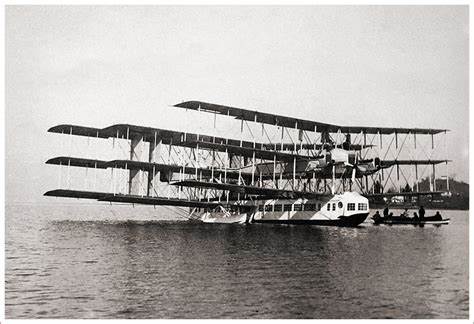
Aviation Appreciation Friday!
Giovanni Battista Caproni:
The Italian Dreamer Who Took Flight
If there’s one thing we can say about Giovanni Battista Caproni, it’s that he was a man with a vision—a vision that soared as high as the planes he built. Born in 1886 in Arco, Italy, Caproni’s journey into aviation wasn’t exactly a straight path. He started his career studying civil engineering in Munich and Liège, focusing on mechanics and technology before aviation caught his eye. It wasn’t long before this young, inventive engineer shifted his attention to the skies, where his real passion lay.

Photo Credit: wikipedia.com
Caproni’s Early Successes
Caproni’s engineering background set the stage for his early forays into aviation. By 1908, he had built his first aircraft—a biplane—and founded his own company, Caproni Aeronautica Bergamasca. While it was an exciting time for aviation, it was also incredibly competitive. But Caproni wasn’t one to back down from a challenge.
World War I became a major turning point for him. As Italy entered the war, Caproni stepped up to design some of the earliest heavy bombers, including the Caproni Ca.1 and Ca.3. These massive aircraft were among the first to successfully carry heavy loads across long distances, giving Italy a critical edge in the air during the war.
The Ca.3 bomber, for example, had a unique three-engine configuration that helped it carry over 600 kilograms of bombs—an impressive feat for the time.
The Caproni Ca.60: A Bold, Beautiful Failure
After the war, Caproni’s ambitions soared even higher, quite literally. He didn’t just want to design military planes; he wanted to change the future of air travel. Enter the Caproni Ca.60 Transaereo, an enormous flying boat meant to carry 100 passengers across the Atlantic. It was a plane like no other, with three sets of triple wings and eight powerful engines—a design that would make even modern engineers scratch their heads.
Unfortunately, not all dreams come true. The Ca.60 crashed during its first test flight in 1921, leaving Caproni with a shattered prototype but an unbroken spirit. Despite the failure, the aircraft remains an iconic symbol of Caproni’s forward-thinking vision. He knew that aviation’s future lay in long-distance commercial flight, and he wasn’t afraid to take risks to make it happen.

Photo Credit: aviationfile.com
Post-War Contributions: A Legacy of Innovation
Though the Caproni Ca.60 never got off the ground, Giovanni Battista Caproni continued to push boundaries in aviation. He shifted his focus from heavy bombers to smaller, more efficient aircraft for civilian and commercial use. One of his most popular designs during this period was the Caproni Ca.100, a training aircraft that became widely used in Italy during the 1930s.
Caproni’s innovations also extended beyond Italy. He was a global figure in aviation, attending international exhibitions and exporting his aircraft to countries around the world. During World War II, his company produced fighter planes, further cementing his reputation as one of Italy’s top aircraft manufacturers.
More Than Planes: A Passion for Progress
What really made Caproni stand out wasn’t just his technical skill—it was his relentless drive to push the aviation industry forward. Even though his ideas didn’t always succeed (the Ca.60 is a prime example), Caproni believed in taking bold risks. He was convinced that aviation would play a pivotal role in connecting the world, and he worked tirelessly to turn that belief into reality.
The Caproni Legacy
Giovanni Battista Caproni passed away in 1957, but his legacy lives on. The Museo dell’Aeronautica Gianni Caproni, named in his honor, showcases many of his groundbreaking aircraft and celebrates his contributions to aviation history. Caproni’s work set the stage for modern commercial and military aviation, and his bold designs—successful or not—continue to inspire engineers and aviators around the world.
In the end, Giovanni Battista Caproni wasn’t just an aircraft designer; he was a dreamer, a risk-taker, and a true pioneer. His belief that the sky was the limit helped shape the future of aviation, and his legacy serves as a reminder that sometimes, it’s the boldest ideas that leave the biggest mark.
